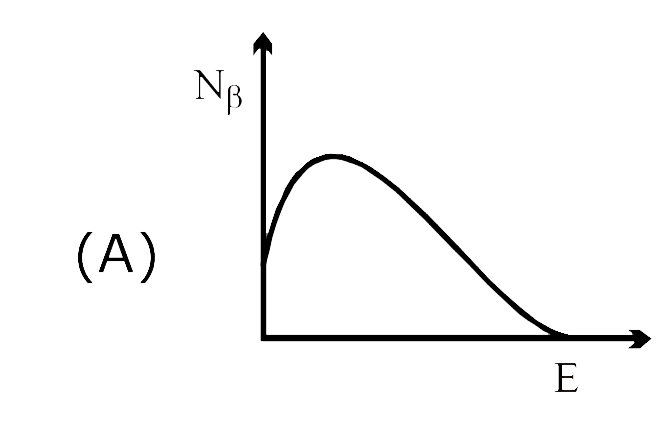Why was the hypothesis of neutrino introduced to explain the energy spectrum of β-decay?
Text Solution
The variable energy of β-particle is shown in the figure. From the figure, it is clear that the energy spectrum of p-pariicle is continuous. Only few electrons possess maximum energy known as end point energy. The energy of most of the {β-particles emitted were smaller than the end point energy.
ZXA→z+1YA+−1e0+E

The energy E is not constant. Hence the law of conservation of energy was violated. In order to resolve the violation of the law of conservation of energy, Pauli gave the hypothesis of neutrino.
According to this hypothesis, during β-decay a high energy β-particle is accompanied by low energy neutrino and vice versa. The sum of energy of β-particle and neutrino is equal to the end point energy. Hence the problem of conservation of energy during β-decay was resolved.
|
Similar Questions
Knowledge Check
In a β-decay
Athe parent and daughter nuclei have same number of protonsBthe daughter nucleus has one proton more less than parant nucleusCthe daugther nucleus has one proton more than the parent nucleusDthe daughter nucleus has one neutrons more than parent nucleusIn β - decay
AA remains unaffected, Z increases by 1BA is unaffected, Z decreases by 1CA increases by 1 and Z is unaffectedDnone of theseThe curve representing the energy spectrum of β -particles is
A B
B C
C D
D
What is beta decay? Write an equation to represent β−andβ+ decay.
Explain the energy distribution curve is β decay.
View SolutionWhat are beta rays ? What is the main feature of beta ray energy spectrum?
View SolutionPauli suggested the emission of neutrino during β+ decay to explain
View SolutionPauli suggested the emission of nutrino during β+ decay to explain
View SolutionIn β−decay, all the emitted electron do not have the same energy the same energy.
β−decay is not a two body decay process.
View Solution
